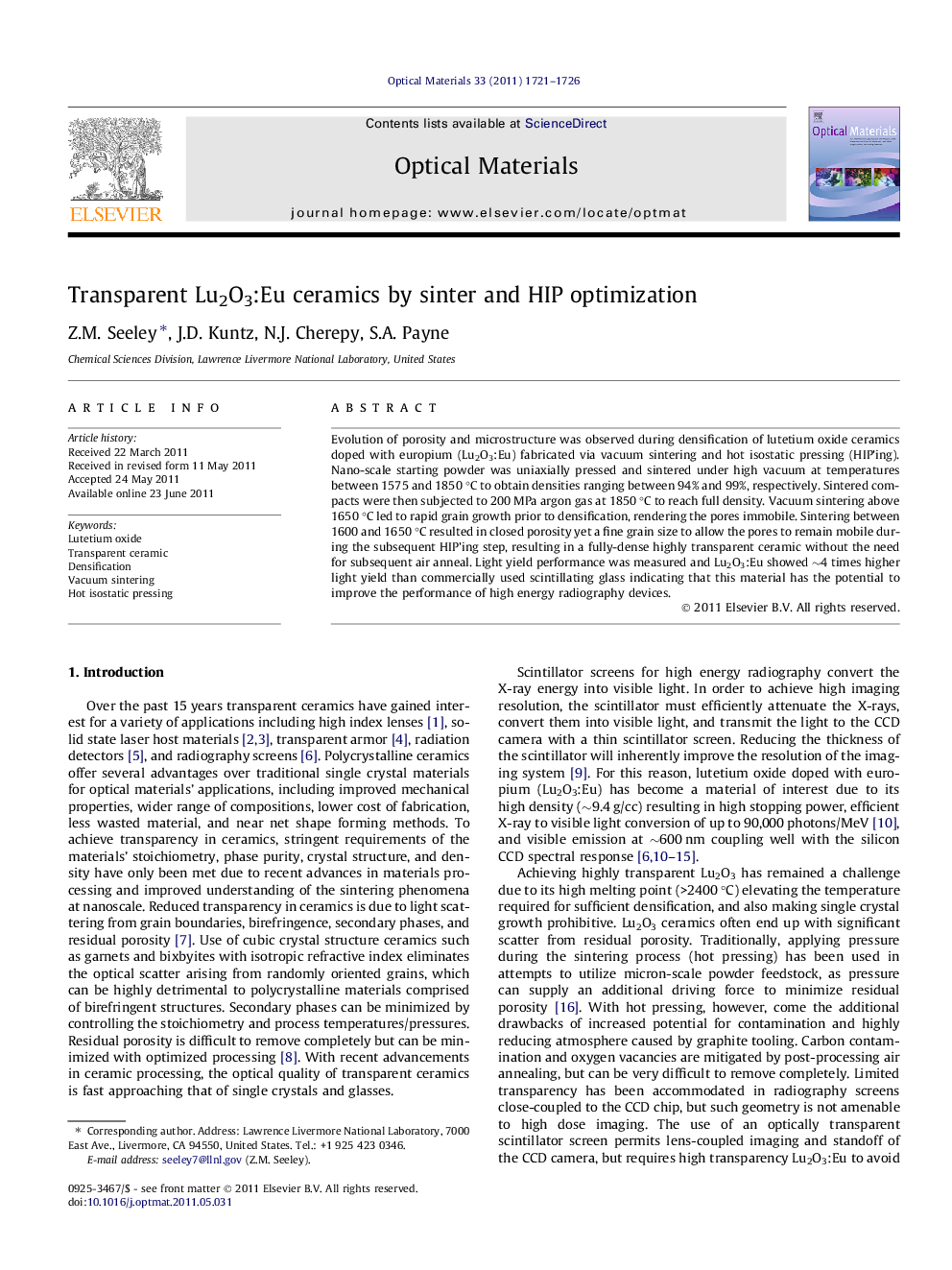| Article ID | Journal | Published Year | Pages | File Type |
|---|---|---|---|---|
| 1495307 | Optical Materials | 2011 | 6 Pages |
Evolution of porosity and microstructure was observed during densification of lutetium oxide ceramics doped with europium (Lu2O3:Eu) fabricated via vacuum sintering and hot isostatic pressing (HIP’ing). Nano-scale starting powder was uniaxially pressed and sintered under high vacuum at temperatures between 1575 and 1850 °C to obtain densities ranging between 94% and 99%, respectively. Sintered compacts were then subjected to 200 MPa argon gas at 1850 °C to reach full density. Vacuum sintering above 1650 °C led to rapid grain growth prior to densification, rendering the pores immobile. Sintering between 1600 and 1650 °C resulted in closed porosity yet a fine grain size to allow the pores to remain mobile during the subsequent HIP’ing step, resulting in a fully-dense highly transparent ceramic without the need for subsequent air anneal. Light yield performance was measured and Lu2O3:Eu showed ∼4 times higher light yield than commercially used scintillating glass indicating that this material has the potential to improve the performance of high energy radiography devices.
► We examine microstructure evolution in Lu2O3:Eu during sintering and HIP’ing. ► Over-sintering led to rapid grain growth entrapping pores in grain interiors. ► Optimized temperatures maintained minimal grain size enabling high pore mobility. ► Highly transparent Lu2O3:Eu ceramic was fabricated without secondary air anneal.
